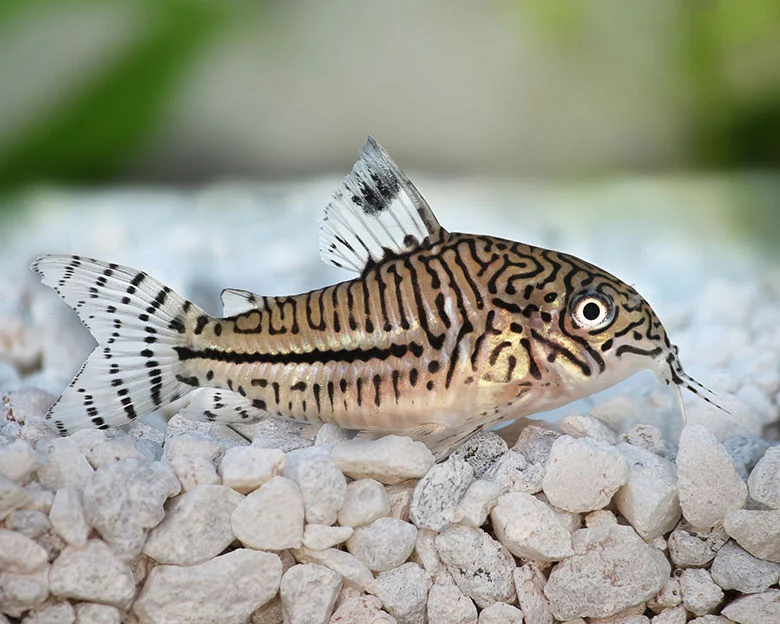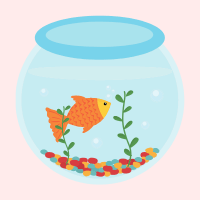Welcome to the world of Cory Catfish! If you’re looking for a peaceful, easy-to-care-for fish that adds character to your aquarium, then look no further than the Cory Catfish. These unique fish are known for their playful nature and interesting behaviors, making them popular among hobbyists.
In this article, we will guide you through the basics of Cory Catfish care, from tank setup to feeding and maintenance. You’ll learn about their origins and characteristics and the ideal tank size, substrate, and water parameters for their well-being.
We’ll also provide tips on how to choose good tank mates for your Cory Catfish, so you can create a harmonious and thriving community in your aquarium. With our comprehensive guide, you’ll be well on your way to mastering the basics of Cory Catfish care and providing a happy and healthy home for your new aquatic friends. Be sure to also check out our best Cory Catfish food picks.
Key Takeaways
- Cory catfish are peaceful and easy-to-care-for fish that are native to South America.
- Tank set up should include live plants, substrate for foraging and digging, and decor options such as driftwood and rocks.
- A balanced diet is essential for the health of the fish, and breeding requires soft, slightly acidic water and privacy for the female.
- When choosing tank companions, peaceful and small fish or shrimp are recommended to avoid aggression and predation.
Origins and Characteristics

You already know that Cory Catfish are essential, but do you know about their origins and unique characteristics?
Cory Catfish are native to South America and are commonly found in small streams, ponds, rivers, marshes, and shallow waters. Their bone-like plates and small, short faces make them perfectly adapted to their natural habitats. Their protruding pectoral fins help them navigate through the diverse habitats they inhabit.
There are over 170 Corydoras species, each with its own unique characteristics and adaptations. Their habitat diversity has allowed for the evolution of different species with varying adaptations to their environments.
Cory Catfish are known for their peaceful and easy-going nature, making them a great addition to any community tank. They are omnivores and prefer temperatures between 72 to 82°F, pH between 7.0-7.8, and water hardness between 3-10 DH.
Their delicate barbels require sand or rounded gravel substrate, and they love live plants for hideouts.
Tank Set Up and Requirements
To create a comfortable home for your Corydoras, make sure your tank is at least 20-30 gallons and has a sand or rounded gravel substrate for their delicate barbels. Live plants are essential for them to hide in and explore. Consider Java fern, Anubias, and Amazon sword plants.
Corydoras are bottom dwellers, so make sure the substrate is at least 2 inches deep to give them enough room to forage and dig. Here are some decor options and substrate choices to consider when setting up your tank:
- Decor options: driftwood, rocks, caves, and other structures for the Corydoras to hide in.
- Substrate choices: sand and rounded gravel are the best options to avoid injuring the Corydoras’ barbels. Avoid sharp gravel or substrate with large particles.
- Lighting: moderate lighting is best for the plants and the fish. Avoid bright light, which can be stressful for the fish.
- Filtration: use a good filter that can handle the size of your tank and the number of fish you have. A hang-on-back filter or canister filter are good options.
By providing a comfortable and natural environment for your Corydoras, you are helping them thrive and live long and healthy life. With the right tank setup and care, your Corydoras will be a beautiful and entertaining addition to your aquarium community.
Caring for Cory Catfish
Feeding your Corydoras regularly with a variety of high-quality food such as shrimp pellets, algae wafers, and live or frozen foods will ensure they receive the necessary nutrients for their health and vitality. Cory Catfish are omnivores, so they will eat both plant and animal matter. It is essential to provide them with a balanced diet, not overfeeding them, as this can lead to health problems. A good rule of thumb is to feed them twice a day, only what they can consume within a few minutes.
Breeding Cory Catfish can be challenging, but with the right conditions, it is possible. The first step is to ensure that you have both male and female Cory Catfish in your tank. Female Cory Catfish are wider and plumper than males, so it should be easy to identify them. The next step is to create the right conditions for breeding.
Cory Catfish prefer soft, slightly acidic water, and the temperature should be between 75-80°F. Providing them with a cave or small enclosure for privacy will also encourage breeding. Once they have mated, the female will lay eggs that the male will fertilize.
The eggs will hatch within a few days, and the fry will need to be fed a diet of small, live foods until they are old enough to eat regular food. You can successfully breed Cory Catfish in your home aquarium with patience and care.
| Feeding Habits | Breeding Tips |
|---|---|
| Feed twice a day, only what they can consume within a few minutes | Ensure you have both male and female Cory Catfish in your tank |
| Provide a balanced diet consisting of shrimp pellets, algae wafers, and live or frozen foods | Create the right conditions for breeding such as soft, slightly acidic water and a temperature of 75-80°F |
| Do not overfeed, as this can lead to health problems | Provide a cave or small enclosure for privacy to encourage breeding |
| Cory Catfish are omnivores and will eat both plant and animal matter | Once they have mated, the female will lay eggs that the male will fertilize |
| Fry will need to be fed a diet of small, live foods until they are old enough to eat regular food | Patience and care are necessary to successfully breed Cory Catfish |
Choosing Good Tank Mates
When selecting companions for your Corydoras, it’s important to consider their peaceful temperament and small size. Introducing shrimp can also be a great addition to your tank, as long as they are not too small to be mistaken as a snack by your Corydoras. Amano shrimp, ghost shrimp, and cherry shrimp are some of the most popular species to introduce as they are compatible with Corydoras and can help keep your tank clean.
On the other hand, it’s best to avoid aggressive fish when choosing tank mates for your Corydoras. They can easily be intimidated or injured by larger fish and may even become stressed and sick. Additionally, fish that are known to eat smaller fish should also be avoided as they can pose a threat to your Corydoras.
By keeping these things in mind, you can ensure that your Corydoras will live happily alongside their tank mates.
Frequently Asked Questions
How Often Should I Feed My Cory Catfish?
You can never overfeed your Cory catfish! These active bottom dwellers need to eat small amounts of high-quality food several times a day. A varied diet of pellets, flakes, and frozen or live foods is recommended.
Can Cory Catfish Live With Other Bottom-Dwelling Fish Like Plecos?
Compatibility concerns arise when considering tankmates for Cory Catfish. Ideal tankmates include Otocinclus Catfish, Tetras, Swordtails, and some shrimp species. Avoid aggressive or significantly larger fish and those that injure or eat smaller fish.
Will Cory Catfish Eat Live Plants In My Aquarium?
Yes, Cory catfish may eat live plants in your aquarium. However, they can be kept in planted tanks with the right precautions. Cory catfish are excellent algae controllers and can help keep your plants healthy. Proper substrate, lighting, and plant selection can prevent plant damage.
What Should I Do If My Cory Catfish Becomes Sick Or Injured?
If your cory catfish becomes sick or injured, it is important to act quickly. Use catfish medication and provide a separate quarantine tank for treatment. Preventative measures include regular water changes and maintaining a clean tank to promote good health.
Can Cory Catfish Live In A Community Tank With Larger Fish?
Did you know that Cory Catfish can live up to 5 years or more if given good nutrition and not put under stress? However, they should not be kept with aggressive fish or in a too small tank. A 20-30 gallon tank is recommended for 8 Corydoras and other small fish.
Take Action to Create a Thriving Home for Your Cory Catfish!
Congratulations on mastering the basics of Cory Catfish care! By now, you’re well-versed in their origin, characteristics, and tank requirements. These peaceful and easy-to-care-for fish make a wonderful addition to any aquarium, provided they’re given the right environment to thrive.
Remember, maintaining a clean and healthy tank is crucial to the well-being of your Cory Catfish. Regular water changes, proper filtration, and a well-balanced diet are essential to keep your fish happy and healthy. As a general rule of thumb, aim to change 20-30% of the water in your tank every 2-3 weeks.
In conclusion, caring for Cory Catfish is a rewarding and enjoyable experience. With the right knowledge and tools, you can create a thriving aquatic environment that your fish will love to call home.
As the saying goes, “A happy fish is a healthy fish,” and with your dedication and care, your Cory Catfish will thrive for years to come.

